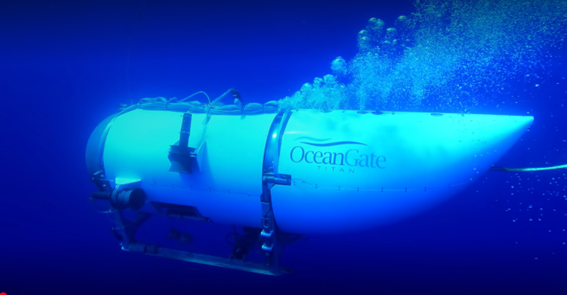
The documentary “Titan: the OceanGate Disaster”, recently released by Netflix, which revisits the tragedy of the submersible expedition that occurred in 2023, also offers perspectives to reflect on risk management and image crises. At the time, the world watched in amazement as the search and rescue attempts for the five victims of the accident caused by the implosion of the vessel, created to carry out tourist trips to the wreckage of the Titanic, 3,800 meters deep in the North Atlantic.
The nearly two-hour film was made based on the narrative of former employees of OceanGate, the company that developed the Titan under the command of businessman Stockton Rush, one of the passengers who died in the tragedy. The documentary offers many layers to the case, but here the focus is on shedding light on central aspects of risk management and reputational crises. Without belittling the tragedy itself, the intention is to address risk management and reputational crises, especially in contexts marked by innovation, high public exposure and decision-making under uncertainty.
Every crisis was once a risk
At the heart of the disaster is a corporate culture of negligence towards risks, which, according to OceanGate employees, ignored technical warnings. The case highlights the importance of robust governance and risk management structures, which are essential in highly critical projects such as Titan, which threaten not only the sustainability and longevity of the operation, but above all, people's lives.
According to reports from former employees, the safety of the submersible was questioned internally. There were concerns about the use of unconventional materials and the lack of mandatory external regulations for vessels of this type.
Compliance is an ally, not an obstacle
In the name of disruption, OceanGate operated outside of regulatory requirements and, according to the documentary, moved forward despite warnings from engineers and experts. The company did not obtain independent certifications and adopted experimental materials – such as carbon fiber in the hull – without technical support.
In crisis management, the lack of external validation can expose vulnerabilities to the company's reputation, especially when public perception associates this stance with negligence or a lack of organizational due diligence.
And even more so when the consequences are extremely serious, such as the death of people. The balance between innovation and safety is a constant challenge for companies seeking to transform the market through new solutions and/or technological experiences.
The failed response: no plan, too much silence
When the crisis broke out, there was no prepared spokesperson or clear communication strategy. What we saw was a vacuum filled by the press and the victims' families.
The lack of preparation to respond to questions at the right time and clarify important points related to the accident at sensitive times tends to increase reputational damage. and reinforces the idea that the company never had control of the situation.
In cases like this, which are high risk and have the potential for global public repercussions, the lack of clear and effective contingency plans is striking.
Reputation: the hardest asset to rebuild
Today, OceanGate is no more. Its reputation has become a global case study in the failure of risk and crisis management. The documentary helps to crystallize this image not as an accident, but as a tragedy waiting to happen.
The greater the negative public repercussion, especially when it involves loss of human life and great emotional shock, the longer, more expensive and more tortuous will be the path to reconstruction and regaining trust..
In some cases, this will not even be possible. Therefore, managing reputational risks and threats must be considered a priority on the agenda of shareholders and C-Level executives.

Mariana Azevedo is a journalist and Business and Marketing Manager at ANK Reputation
The signed articles reflect the opinion of the authors


